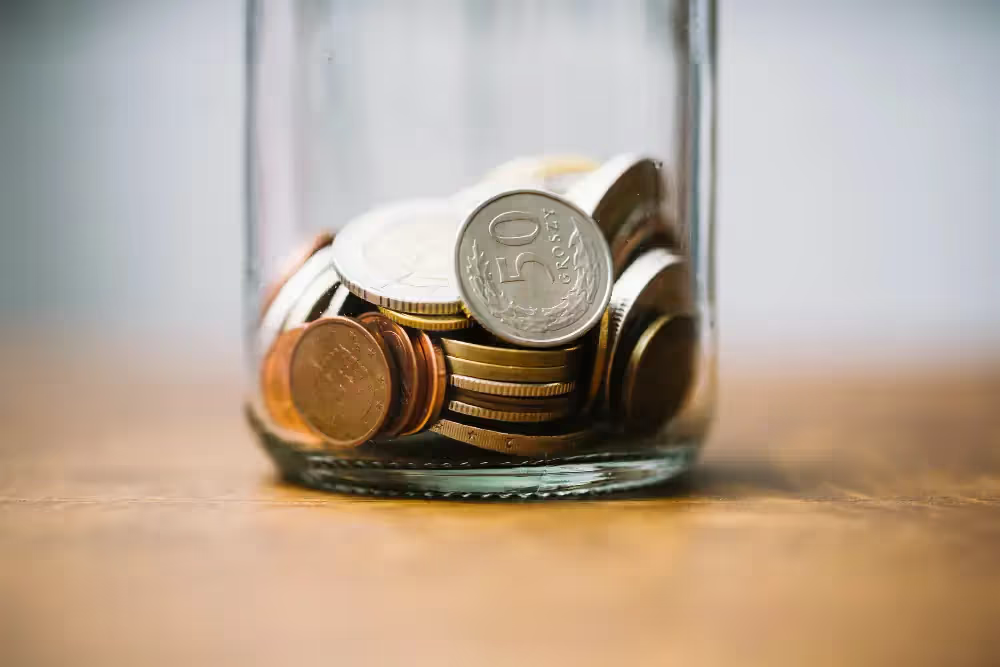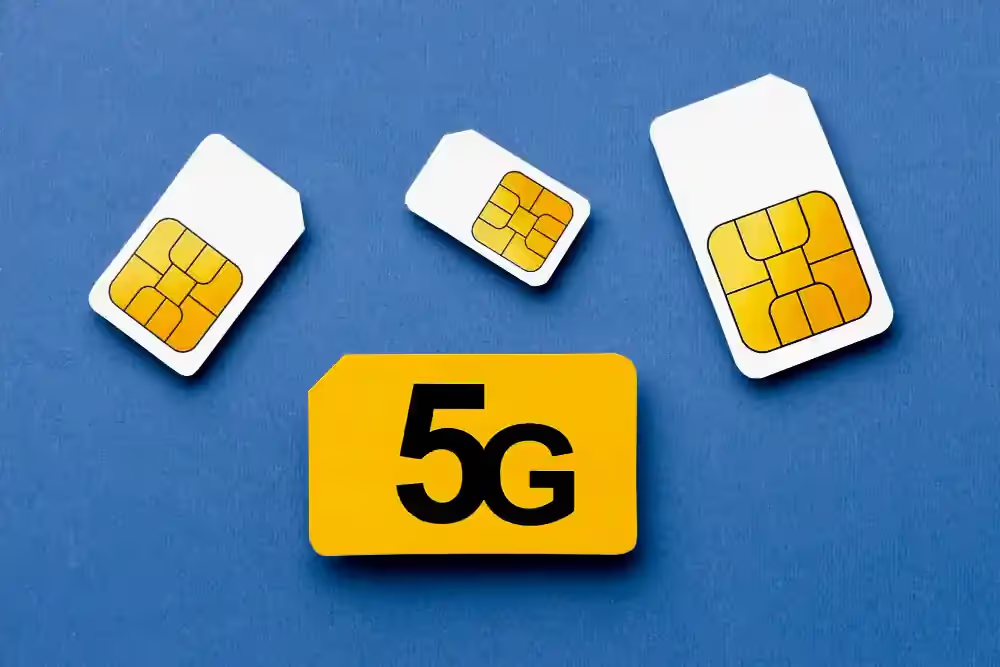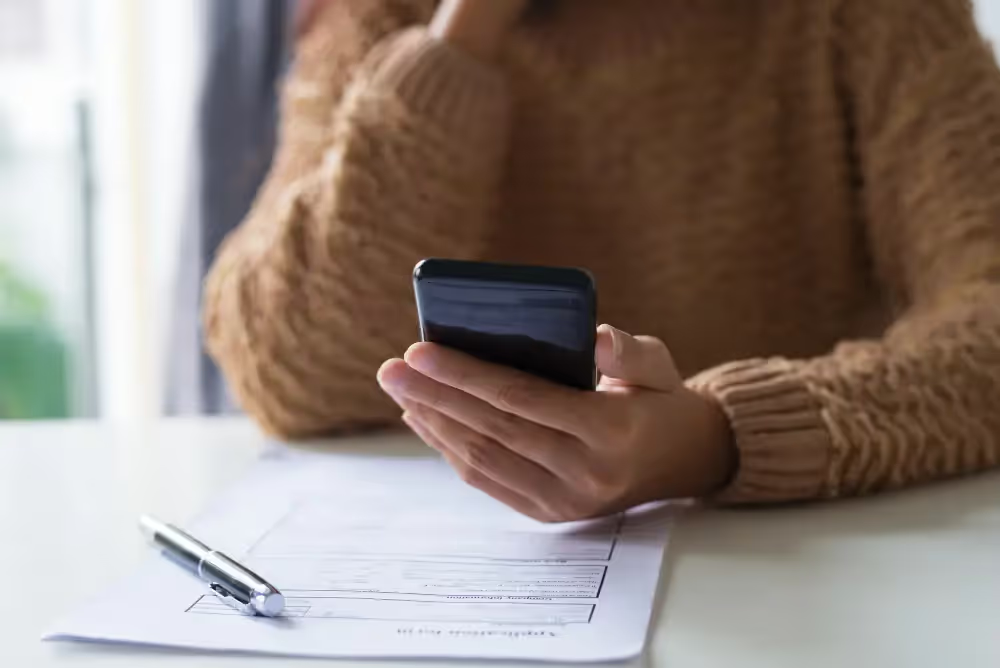Phone Plans That Won't Empty Your Wallet: A Real Person's Guide
Phone Plans That Won't Empty Your Wallet: A Real Person's Guide
My phone bill used to be a monthly source of dread. $127.48, like clockwork, draining from my account for "unlimited" everything I barely used. Sounds familiar?
After a particularly tight month when that bill meant choosing between groceries and keeping my phone on, I decided enough was enough. Three months of research, two provider switches, and one major revelation later, I'd cut my bill by 70% without sacrificing coverage.
Here's what nobody tells you: those glossy carrier stores and Super Bowl commercials? They're selling you way more than you need. The good news is, whether you want dirt-cheap service, actually free plans (they exist!), or just a fair price for what you use, options abound. You just need to know where to look.

The Great Phone Plan Rip-Off Nobody Talks About
Walk into any major carrier store and watch what happens. They'll steer you toward unlimited plans, premium features, and insurance add-ons faster than you can say "basic coverage." Why? Because the average person hands over about $70 monthly for cell service. That's $840 a year - enough for a decent vacation or several months of groceries.
Most people stick with major carriers out of habit or fear that cheaper alternatives mean terrible service. But here's what the big carriers don't advertise: many budget-friendly options use the exact same towers and networks. You could be getting identical coverage for half the price.
The phone plan landscape has transformed dramatically over the past few years. Competition has heated up, and consumers are the winners. From completely free services to feature-packed plans under $20, there's never been a better time to switch.
Understanding What Makes a Phone Plan "The Best Deal"
Not all deals are created equal. What works perfectly for your neighbor might be a terrible fit for you. The best phone plan depends on several factors:
Your actual usage patterns matter most. Track your data consumption for a month. Many people discover they use far less data than they think, especially with widespread WiFi availability. If you're consistently using under 5GB monthly, you're probably overpaying for unlimited data you don't need.
Coverage in your area trumps everything else. The cheapest plan means nothing if you can't make calls from your living room. Before switching, check coverage maps and read local reviews. Here's a pro tip I learned the hard way: grab a trial SIM card first. Seriously. I once switched to a carrier with "excellent" coverage maps only to discover I couldn't make calls from my own kitchen. Thankfully, they had a 14-day return window. Now I test-drive every carrier before committing.
The sneaky math of "cheap" plans. Remember that $15 plan I mentioned getting excited about? Yeah, my first bill was $24.73. Turns out "regulatory recovery fees" and "administrative charges" are just creative ways to jack up the price. One carrier even charged me a $2.50 "paper bill fee"—for an electronic bill! Now I screenshot the checkout page showing the final price, taxes included. Saved me from two bait-and-switch situations last year.
Why I'll never sign another contract. Sure, that iPhone deal looked sweet with a two-year commitment. Six months later? A carrier I'd been eyeing dropped their prices by 40%. But there I was, stuck paying double for another 18 months. The "savings" from that contract cost me over $400 in missed opportunities. Most savvy consumers now prefer month-to-month arrangements.
The New Wave of Free Phone Plans (Yes, They're Real)
When I first heard about completely free phone plans, my skepticism meter hit maximum. Nothing's truly free, right? Well, I was partially correct—but these services do exist, and some are surprisingly usable.
FreedomPop pioneered the free phone plan model. Their basic tier includes 200 minutes, 500 texts, and 500MB of data monthly at no cost. The catch? You'll see ads, and they'll constantly nudge you toward paid upgrades. Still, for emergency phones or light users, it's hard to beat free.
TextNow takes a different approach. They provide unlimited talk and text completely free, supported by ads within their app. You'll need a WiFi connection or can add data starting at $5 monthly. I've recommended TextNow to several college students and seniors on fixed incomes - most love it.
Google Voice isn't really a phone plan, but I'd be doing you a disservice not to mention it. I've used it for years as my "Craigslist number" - you know, for when you're selling that old couch but don't want randos having your real digits. Completely free, works anywhere you have WiFi or data. My contractor buddy runs his entire side business through Google Voice. Saves him from carrying two phones.
So who actually thrives with these free options? My 72-year-old neighbor uses TextNow and loves it: she's always on her home WiFi anyway. My sister got FreedomPop for her 10-year-old's first phone (smart move for teaching phone responsibility without the monthly bill). And my college roommate? Still using that free line for food delivery orders three years later. Don't expect the reliability or features of paid services, but for zero dollars, they deliver surprising value.
Budget Plans That Deliver Premium Features
Moving up from free options, the $15-30 monthly range offers remarkable value. These plans often include features that cost extra with major carriers.
Mint Mobile has disrupted the industry with bulk pricing. Buy three, six, or twelve months upfront, and monthly costs plummet. Their 4GB plan runs just $15 monthly when you buy annually. The network (T-Mobile) provides solid coverage in most areas, and the service includes hotspot capability—something many budget plans restrict.
Visible takes simplicity to another level. One plan, one price: $25 monthly for unlimited everything on Verizon's network. No contracts, taxes included, hotspot included. The catch? Data speeds can slow during network congestion, and customer service is entirely digital.
Cricket Wireless (AT&T's network) offers group discounts that make family plans incredibly affordable. Get five lines with unlimited data for $25 each. Even their single-line unlimited plan at $55 beats most major carriers' pricing.
US Mobile stands out for customization. Build your exact plan with precisely the minutes, texts, and data you need. Light users can get service for under $10 monthly, while power users can choose between two different networks (Verizon or T-Mobile).
The "Free Phone and Plan" Deals: Reading the Fine Print
Advertisements promising free phones with free service sound too good to be true—because they usually are. But wait—some free phone deals are actually legit. You just gotta know which ones.
Take government programs like Lifeline. My aunt qualified after she lost her job last year. Free smartphone, free monthly service, no catch. Same with the Affordable Connectivity Program. These aren't sketchy fly-by-night operations; they're federal programs that've been around for years. If money's tight, check if you qualify. No shame in using programs your tax dollars fund.
Now, about those "FREE iPhone!" ads from big carriers... I fell for one. Here's how that "free" phone actually worked:
- Had to switch from my $30 plan to their $85 "premium unlimited"
- Locked in for THREE YEARS (who does that anymore?)
- They wanted my perfectly good iPhone 12 as a trade-in
- Oh, and I needed to add a tablet line I'd never use for another $20
When I did the math at home—because of course they don't want you doing it in the store—that "free" phone was costing me an extra $1,920 over the contract. I could've bought two phones cash for that. That "free" iPhone might cost you an extra $1,000 over two years compared to buying it outright and choosing a budget plan.
Better strategy: Buy a good unlocked phone (previous generation flagships offer incredible value) and pair it with an affordable plan. You'll save more money long-term and maintain flexibility.
Finding Cell Phone Providers Near You: Local Options Matter
While online research is helpful, nothing beats local knowledge when choosing a cell phone provider. Here's how to find the best options in your specific area:
Skip the fancy carrier stores and find that hole-in-the-wall phone shop instead. You know the one—squeezed between the nail salon and the Chinese takeout place. The owner at my local shop, Ray, saved me from a huge mistake. I was ready to sign with AT&T, but he pulled out his phone and showed me the speed tests. "See this? Two blocks north, AT&T drops to nothing. Verizon though? Solid everywhere around here." That five-minute conversation saved me months of frustration.
Facebook is your friend here. Seriously, join your town's Facebook group and search "cell phone" or "carrier." When I did this, I found a goldmine—apparently half my neighborhood can't get T-Mobile signal in their basements, but Verizon works everywhere. One guy even posted speed tests from every major intersection in town. Way more useful than those "coverage maps" that show everything in perfect green.
Here's something most people miss: regional carriers. Ever heard of C Spire? Me neither, until I visited Mississippi. My cousin pays $35 for better coverage than I get in California at twice the price. These smaller companies focus on specific areas and often crush the big boys on their home turf. Union Wireless dominates Wyoming. Cellcom owns rural Wisconsin. If you're not in a major city, dig around for these hidden gems.
And please, PLEASE test before you commit. I learned this after getting burned twice. Most carriers sell trial SIMs or have return periods. Yeah, it's a hassle activating a test line for $15, but remember my kitchen story? That mistake cost me way more than fifteen bucks.

MVNOs: The Money-Saving Hack Big Carriers Hope You Never Discover
Okay, this is where things get interesting. MVNOs sound complicated, but they're stupid simple. Picture this: Verizon builds expensive towers. They need to cover costs whether those towers are at 30% or 90% capacity. So they quietly sell that extra space to smaller companies who slap their own brand on it and charge half the price.
It's like buying store-brand cereal. Same factory, same recipe, different box, way cheaper. My phone literally connects to the same Verizon tower whether I'm paying them $80 or paying Visible $25. The difference? Mostly just the logo on my bill.
Here's who uses what network (though this stuff changes constantly, so double-check):
Riding T-Mobile's network: Mint (Ryan Reynolds didn't buy this for nothing), Metro (used to be MetroPCS), Tello (my personal favorite for customization)
Using Verizon's towers: Visible (Verizon actually owns this one), Total Wireless, Straight Talk (they actually use multiple networks—confusing but sometimes useful)
On AT&T's network: Cricket (AT&T owns this too), Pure TalkUSA (great for seniors), Red Pocket (these guys let you choose your network)
The network hoppers: Boost bounces around, Ting lets you pick, Google Fi switches automatically
Fair warning: this industry moves fast. Last year Dish bought Boost, T-Mobile absorbed Sprint's customers, and three MVNOs I liked disappeared entirely. Always verify current network partnerships before signing up.
Real Strategies for Maximizing Your Phone Plan Value
After helping dozens of friends and family members reduce their phone bills, I've developed some reliable strategies:
Time your switches strategically. The best deals often appear during holiday seasons, back-to-school periods, and major shopping events. Black Friday regularly brings exceptional prepaid plan discounts.
Stack discounts whenever possible. Many people qualify for discounts they never claim: student, military, senior, first responder, or employer partnerships. These can reduce bills by 10-25%.
Use family plans even if you're not family. Many providers don't verify relationships. Trusted friends can share family plans and split the savings. Just establish clear payment responsibilities upfront.
Actually look at your usage. I know, I know—checking your data usage sounds about as fun as doing taxes. But humor me. Last December, I finally opened my carrier app (after ignoring it for two years) and nearly choked. I was paying for 50GB monthly but averaging 3.2GB. Three. Point. Two. That's like buying a pickup truck to transport a lunchbox. Switched to a 5GB plan the next day and haven't gone over once.
Seasonal switching saved my budget. Here's something I stumbled onto by accident: during summer, I'm never home. Beach trips, camping, visiting family—I blow through data like crazy. Come October? I'm a hibernating bear with WiFi. So now I bump up to unlimited June through August, then drop back down. Saves me about $180 a year. Most carriers let you flip-flop monthly now, no questions asked.
The Expensive Surprises That Made Me Want to Throw My Phone
Let me tell you about the charges that blindsided me over the years:
Remember activation fees? Yeah, that $35 "one-time charge" that magically appears on every. single. line. I brought four family members to Verizon—boom, $140 in fees before we'd made a single call. The kicker? The online-only deal waived them completely. The store rep "forgot" to mention that little detail.
But nothing, NOTHING, prepared me for the Great Canada Incident of 2019. Drove to Niagara Falls, phone still on. Sent exactly one text to my wife: "Made it!" Next bill: $47.50 in roaming charges. For. One. Text. Turns out my "North America" plan meant "USA only" in carrier-speak. Now I turn on airplane mode the second I see a "Welcome to Canada" sign.
Device insurance often costs more than it's worth. Do the math: $15 monthly over two years equals $360—enough to buy a decent replacement phone. Consider self-insuring by setting aside money monthly instead.
Autopay requirements for advertised prices can be problematic. If you prefer managing payments manually or the required payment method doesn't work for you, prices might increase by $5-10 monthly.
Network deprioritization affects many budget plans. During busy times, your data speeds might slow significantly. This rarely impacts basic usage but can frustrate heavy streamers or gamers.
Special Considerations for Different User Types
Seniors and Light Users
If you primarily use your phone for calls and texts, paying for unlimited data wastes money. My mom's setup? Pure simplicity: 2GB data from Consumer Cellular for $15. She FaceTimes the grandkids on WiFi and uses maybe 500MB monthly for Google Maps. T-Mobile keeps calling about their "55+ unlimited plan" for $45. She laughs every time. "Why would I pay triple for data I don't use?" Smart woman.
The real senior hack? Rollover data. Mom banks unused gigabytes like she's saving for retirement. Last Christmas when everyone visited, she burned through 4GB showing off photos. No overage charges, just used her stockpile.
Students and Young Adults
College kids live on their phones but have ramen noodle budgets. Here's what actually works:
My nephew bought a year of Mint Mobile with his summer job money—$180 for the whole school year. Genius move. No monthly bills during the semester when money's tight. His roommate went with Visible ($25 unlimited everything) and they share the hotspot for their apartment. Between campus WiFi and that setup, they're golden.
The smartest kid I know? She keeps a 1GB plan and lives on WiFi. Campus, coffee shops, home—always connected without the data drain. Saves $40 monthly for, you know, actual food.
Families with Children
Four kids, four phones, one massive headache—that was my sister's life until she discovered Cricket's group magic. Five lines unlimited for $125 total. That's $25 each, including her teenager who apparently FaceTimes 25 hours a day.
Her 10-year-old? Basic talk and text only. No data means no YouTube rabbit holes at midnight. The parental controls on that line are tighter than Fort Knox. Meanwhile, broken screen repairs taught her the hand-me-down strategy. Dad's old phone becomes teen's phone, teen's phone goes to a middle schooler. Nobody gets the latest model, everybody stays connected.
Remote Workers and Digital Nomads
Different breed, different needs. My freelance designer friend learned this the hard way in Joshua Tree—beautiful scenery, zero bars. Now she rocks dual SIM cards: Verizon for reliability, T-Mobile for speed. Overkill? Not when a dropped video call costs you a client.
Her setup: unlimited everything on both carriers (about $110 total), phone that supports dual SIM, and a backup hotspot device. Expensive? Sure. But one missed deadline costs more than months of premium coverage.
Small Business Owners
Running a business off your personal number is asking for 11pm calls about tomorrow's delivery. Trust me. Google Voice became my sanity saver—free business line that rings through an app. Clients get professional voicemail, I get weekends back.
But here's what they don't tell you: those chat-only customer service plans? Disaster for business. Nothing worse than explaining to a client that you can't call support about their delayed order. Spend the extra $10 for real human help.
How to Switch Carriers Without Losing Your Mind (Or Your Number)
I've switched carriers six times. Lost my number once. Let me save you that particular nightmare.
First, check if your phone plays nice. Sounds basic, but my iPhone 6 worked great on AT&T, became a paperweight on Verizon. Most phones after 2018 work everywhere, but verify anyway. The carrier websites have compatibility checkers—boring but necessary. GSM versus CDMA used to matter hugely; now it's mostly about which radio bands your phone supports.
The contract trap. I once tried switching with 3 months left on my contract. Early termination fee: $150. Savings from new plan: $20 monthly. Do that math before you leap. Though T-Mobile paid my fee when I switched—always ask if they're running buyout promotions.
Grab this stuff before you do anything:
- That account number (not your phone number—different thing entirely)
- Your PIN (forgot mine once, spent 45 minutes on hold to reset it)
- Latest bill (PDF copy works)
- Phone's IMEI (dial *#06# to find it)
THE GOLDEN RULE: New service first, cancel old service second. I cannot stress this enough. My buddy canceled Verizon on Friday, tried to port his number Monday. Gone forever. Ten years of contacts wondering why his number was suddenly some confused grandmother in Phoenix.
When you port, it just... happens. No dramatic countdown, no confirmation fanfare. One minute you're on the old network, next minute the new SIM works. Usually takes 2-3 hours, though my mom's took 5 minutes and my business line took two days. The new carrier handles most technical aspects. Porting typically completes within hours but can take up to 48 hours.
Step 6: Confirm successful porting before canceling. Once your number works on the new network, contact your old provider to ensure final billing accuracy.
Future-Proofing Your Phone Plan Choice
The mobile industry evolves rapidly. Protect yourself by:
Being able to jump ship matters more than you think. Last February, my carrier jacked up prices by $15 with zero warning. Because I wasn't locked in? Switched to Mint that afternoon. My coworker with 11 months left on her contract? Still paying that extra $15 every single month.
Buy unlocked phones. Period. Made this mistake with a "great deal" from AT&T—$200 off a Samsung, but it only worked on their network. Two years later when I found a plan half the price? Useless brick. Now I only buy unlocked, even if it costs more upfront. My current phone has been through four carriers. That flexibility already saved me $600.
Here's my nerdy secret: Google alerts. Got them set up for "Verizon price increase," "new MVNO launch," and "T-Mobile merger." Sounds excessive? Maybe. But I found out about Visible's launch two days early and snagged their intro pricing. That one email saved me $300 last year.
Mark your calendar for the "phone plan checkup." Every January, same time I'm avoiding the gym, I spend 20 minutes comparing plans. It's like finding forgotten money in your coat pocket. This year's discovery? My "grandfather" plan from 2019 was now $30 more than current offerings with twice the data. One phone call, massive savings. Make it as routine as checking your smoke detector batteries. Loyalty rarely pays in the mobile industry.

Red Flags to Avoid
Some deals genuinely are too good to be true. Watch for:
Excessive personal information requests. Legitimate carriers need basic information, not your social security number for a prepaid plan.
Pressure tactics and limited-time offers. Real deals don't disappear in 24 hours. Take time to research and compare.
Hidden activation requirements. Some "free" services require purchasing accessories or additional features at inflated prices.
Vague network information. Reputable providers clearly state which major network they use. Avoid companies that won't specify.
No customer service options. Even budget providers should offer some support method, whether chat, email, or phone.
Time for some honest self-reflection. Pull up last month's bill and actually look at it:
Data usage? I was shocked to find I averaged 3.8GB after years of paying for unlimited. Check yours—bet it's lower than you think.
Coverage needs? List the five places you spend most time. For me: home, office, gym, parents' house, favorite coffee shop. If I get signal there, I'm good 95% of the time.
Real budget? Not what you're paying now—what would make you smile when the bill arrives? Mine was $30. Seemed impossible until it wasn't.
Customer service? I'll troubleshoot anything to save money. My dad? Needs a human on the phone within 5 minutes or he's out. Know yourself.
International stuff? Haven't left the country in three years, but I kept paying for "global features." Dumb.
Look, your perfect plan probably isn't perfect. Mine has slower data speeds during rush hour. So what? I'm saving $50 monthly. That's $600 a year for occasionally waiting an extra second for Instagram to load.
My brother-in-law spends hours tweaking settings on some obscure MVNO to save every possible penny. My mom happily pays Consumer Cellular $5 extra for their legendary customer service. Both are winning because they found what works for them.
Stop Being a Sucker
Here's the truth: phone companies bank on laziness. They literally have meetings about how many customers won't bother switching even after price hikes. Don't be their favorite customer.
I get it—researching plans sounds about as fun as cleaning gutters. But we're talking real money here. My 90 minutes of research last year saved $680. That's $453 per hour. Where else can you make that kind of money in your pajamas?
The game has changed. These aren't the days of three carriers and take-it-or-leave-it prices. You've got options—good ones. Free plans that actually work. Quality service for less than your coffee budget. Carriers fighting each other for your business.
Pull up your current bill right now. Circle what you're paying. Then spend one hour—just one—seeing what else is out there. Use trial SIMs if you're nervous. Port your number when you're ready (it's easier than you think).
Six months from now, you'll either be kicking yourself for procrastinating or thanking yourself every time that smaller bill hits. I know which one feels better.
Whether you end up with a completely free plan, a budget MVNO, or decide your current carrier offers fair value, you'll make that choice informed rather than passive. In today's market, that knowledge alone is worth its weight in saved dollars.
Your perfect phone plan exists. With patience, research, and the strategies outlined here, you'll find it. Then you can redirect those saved dollars toward things that truly matter in your life—rather than enriching already-profitable carriers who've counted on customer complacency for too long.
The mobile revolution isn't coming—it's here. Time to make it work for your wallet.
